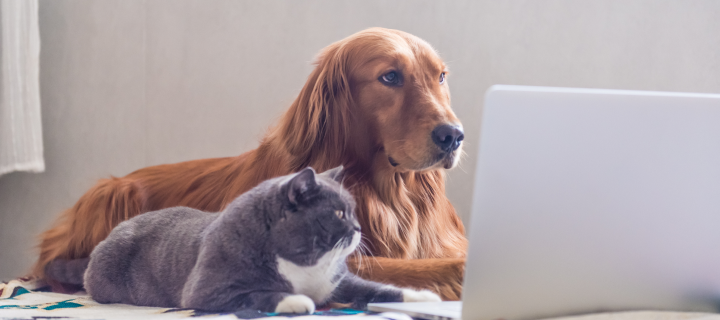



Live Superworms
Superworms are a great choice for your larger reptile, amphibian and bird. Store at room temperature. For long lasting healthy worms feed some chopped apple or other moisture source every other day.
 Please select a store
Please select a store
 Add an address to check availability
Add an address to check availability

Description
Description
Product Description
Superworms are a great choice for your larger reptile, amphibian and bird. Store at room temperature. For long lasting healthy worms feed some chopped apple or other moisture source every other day.
Feeding Instructions
Quantity: Start with small quantities and gradually increase depending on your pet’s health and dietary needs. Feed your pet 2-4 superworms per feeding session.
Frequency: Feed superworms to your reptile a few times per week as part of a varied diet. Superworms should not be the sole item in your reptile's diet due to potential nutritional gaps. Include other feeder insects and appropriate food items to provide a balanced diet.
Preparation: Ensure the superworms are gut-loaded by providing them with nutritious foods such as bran, oats, and slices of fruits and vegetables like apples, carrots, and potatoes for at least 24 hours before feeding. This enhances their nutritional value for your reptile.
Presentation: Use feeding tongs to pick up a superworm and present it to your reptile. Wiggle the worm slightly to stimulate your reptile's feeding response. Ensure the superworm is properly grasped by your reptile before releasing it.
Monitoring: Observe your reptile during and after feeding to ensure they consume the superworms safely. Monitor their health and behavior closely, and adjust the quantity of superworms as needed. Remove any uneaten superworms to prevent them from burrowing into the substrate and potentially harming your reptile.
Habitat and Care
Habitat and Care
Housing: Keep superworms in a well-ventilated container with smooth sides to prevent escape. Use a substrate of wheat bran, oats, or cornmeal, and provide several inches of bedding for them to burrow in.
Temperature: Maintain a temperature range of 70-80°F to keep them active and promote growth. Avoid exposing them to temperatures above 85°F or below 60°F.
Humidity: Keep the habitat dry. Superworms thrive in low humidity environments, and excess moisture can lead to mold growth.
Feeding: Offer a variety of food sources such as bran, oats, and slices of fruits and vegetables like apples, carrots, and potatoes. Remove uneaten fresh food daily to prevent mold and spoilage.
Hydration: Provide moisture through the fresh fruits and vegetables you feed them. Avoid adding water directly to the substrate, as superworms get their hydration from the food.
Maintenance: Perform regular cleaning by removing frass (waste) and uneaten food. Every few weeks, replace the substrate to maintain a clean and healthy environment.
Product Description
Superworms are a great choice for your larger reptile, amphibian and bird. Store at room temperature. For long lasting healthy worms feed some chopped apple or other moisture source every other day.
Feeding Instructions
Quantity: Start with small quantities and gradually increase depending on your pet’s health and dietary needs. Feed your pet 2-4 superworms per feeding session.
Frequency: Feed superworms to your reptile a few times per week as part of a varied diet. Superworms should not be the sole item in your reptile's diet due to potential nutritional gaps. Include other feeder insects and appropriate food items to provide a balanced diet.
Preparation: Ensure the superworms are gut-loaded by providing them with nutritious foods such as bran, oats, and slices of fruits and vegetables like apples, carrots, and potatoes for at least 24 hours before feeding. This enhances their nutritional value for your reptile.
Presentation: Use feeding tongs to pick up a superworm and present it to your reptile. Wiggle the worm slightly to stimulate your reptile's feeding response. Ensure the superworm is properly grasped by your reptile before releasing it.
Monitoring: Observe your reptile during and after feeding to ensure they consume the superworms safely. Monitor their health and behavior closely, and adjust the quantity of superworms as needed. Remove any uneaten superworms to prevent them from burrowing into the substrate and potentially harming your reptile.
Habitat and Care
Housing: Keep superworms in a well-ventilated container with smooth sides to prevent escape. Use a substrate of wheat bran, oats, or cornmeal, and provide several inches of bedding for them to burrow in.
Temperature: Maintain a temperature range of 70-80°F to keep them active and promote growth. Avoid exposing them to temperatures above 85°F or below 60°F.
Humidity: Keep the habitat dry. Superworms thrive in low humidity environments, and excess moisture can lead to mold growth.
Feeding: Offer a variety of food sources such as bran, oats, and slices of fruits and vegetables like apples, carrots, and potatoes. Remove uneaten fresh food daily to prevent mold and spoilage.
Hydration: Provide moisture through the fresh fruits and vegetables you feed them. Avoid adding water directly to the substrate, as superworms get their hydration from the food.
Maintenance: Perform regular cleaning by removing frass (waste) and uneaten food. Every few weeks, replace the substrate to maintain a clean and healthy environment.









